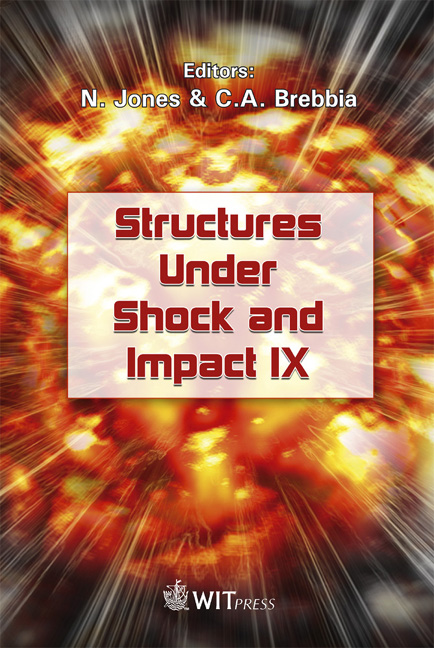Spectrum-based Estimation Method For Peak Structural Responses Of A SDOF System Pounding Against Rigid Structures
Price
Free (open access)
Transaction
Volume
87
Pages
11
Published
2006
Size
1,640 kb
Paper DOI
10.2495/SU060501
Copyright
WIT Press
Author(s)
B. T. Tran & K. Kasai
Abstract
A spectrum-based method is proposed for predicting peak responses of a SDOF system that pounds against adjacent rigid structure(s) during an earthquake. Pounding is considered to occur on either one side or two sides of the system. The contact element is simulated by the Kelvin body combining a spring and a dashpot in parallel. Based on free vibration and harmonic vibration both involving pounding, the equivalent period and damping of the SDOF system are obtained and used to predict peak displacements as well as collision force. The accuracy of the proposed method is demonstrated via extensive numerical experiments over a variety of combinations of system properties, contact element properties, separation distances, and earthquakes. Keywords: relative displacement, structural pounding, viscoelastic contact element, coefficient of restitution, equivalent period, equivalent damping. 1 Introduction Pounding between buildings occurs when separation distance is insufficient to accommodate the peak relative displacement between them [1, 2]. The collision between two buildings is typically simulated by contact element, which becomes active only when contact is detected. Several types of contact element such as linear/nonlinear spring element, and linear/nonlinear viscoelastic element have been used for pounding simulation [3-5]. The use of numerical methods for this nonlinear dynamic problem poses many difficulties and requires time-consuming efforts. Moreover, using numerical methods at the beginning of design may not be an efficient choice because of the nature of design process, where repetitive
Keywords
relative displacement, structural pounding, viscoelastic contact element, coefficient of restitution, equivalent period, equivalent damping.





